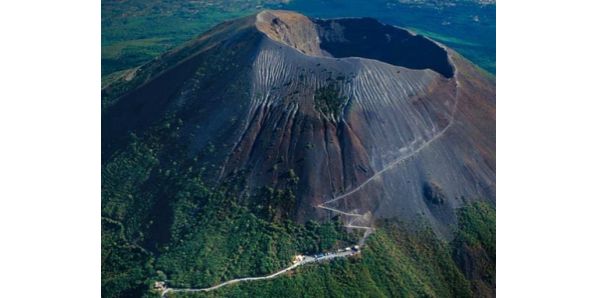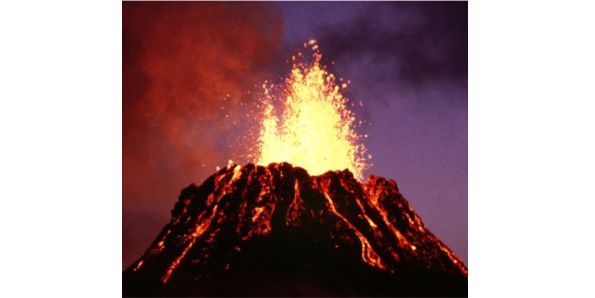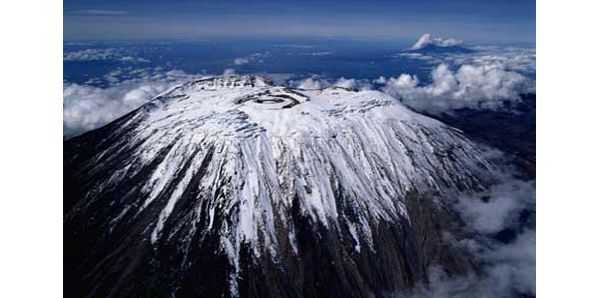| Online: | |
| Visits: | |
| Stories: |
Top 10 Most Active Volcanoes in the World
“All civilization has from time to time become a thin crust over a volcano of revolution” -Havelock Ellis (1859-1939), British psychologist.
The rumblings of volcanoes have been the major reason of eruption of many civilizations. Some even believe the same for dinosaurs’ extinction. The lava and ash clouds they spew over a wide area have demolished many houses and made that territory unsuitable for vegetation and survival. Enormous clouds and thick layers of ash blanketing the ecosystem have a prominent reason for illness. The regular or discontinuous eruptions have forced people-under-roof to become refugees.
Scientifically a volcano is a rupture in the earth’s crust due to tectonic plates collision leading to sudden and forceful eruption of hot lava and magma along with debris and ashes. This costs dearly to the concerned government with catastrophic eruption causing enormous damage of 46.6% to the forestry trailed by property and agriculture.
Mythological stories ascribe volcanic to supernatural causes, such as actions of Gods. The ancient Greeks volcanoes capricious power can only be explained as the actions of God believed to be ducts for Earth’s tears.
The International Association of Volcanology and Chemistry of the Earth’s Interior (IAVCEI) has identified decade volcanoes that are worthy of study. The Decade Volcanoes are sixteen volcanoes who are blamed for highest damage.
Let’s have a look at the top then volcanoes that are responsible for immense destruction and damage of the ecosystem.
1. Mount St. Helens
Skamania Country, Washington
Known for its ash explosion and pyroclastic flows, it is an active stratovolcano. The most deadly catastrophic eruption took place on May 18, 1980 and it was the most deadly and economically destructive eruption ever. The volcano was arrayed by debris avalanche and an earthquake measuring 5.1 on richter scale. The volcano is located in the cascade range, it is a large eruptive cone consisting of lava rock. The mountain includes layers of basalt and andesite.
2. Mount Vesuvius
Italy
The infamous volcano is best known for bringing down its neighboring cities of Pompeii and Herculaneum in A.D.79. It is located on the west coast of Italy AND is the only active volcano on mainland Europe. It is one of the most dangerous volcanoes due to its nearby population of city of Naples and surrounding slopes in the mainland. The red zone comprises of 60,000 people living in eighteen towns, consequently stating that people in huge numbers are prone to imminent threats. The Italian government has launched many evacuation plans to support its subjects and to diminish the aftereffects of the eruption. The volcano is classified as complex stratovolcano due to explosive nature and pyroclastic flows. The research shows that the volcanic eruption will not be gentle and may cause stupendous loss. The mountain has erupted more than sixty times and now it has entered a quiescent state alarming for jeopardy.
3. Mount Fuji
Japan
Ever wondered a volcano being worshipped? Here you are!
This mountain is among the three holy mountains in Japan as was added to World Heritage List due to extraordinary scenic beauty and historic site. More than 200,000 people climb up this mountain every year. Located in Honshu Island, it is the highest mountain in Japan. It is an active stratovolcano that erupted last in 1707-08. The volcano is currently classified as low risk but the recent earthquake activities have enlightened the world that the magma pressure on the mountain is stronger than 1707 and that now the eruption will come up with more potential and imminent threats. The Mount Fuji comprises of three types of volcanoes The Old Fuji, The New Fuji and The Komitake Volcano.
4. Mt. Kilauea and Mauna Loa
Hawaii
Kilauea is the world’s most active volcano and the eruptive center of the Hawaiian Emperor Seamount chain. Mauna Loa is also nicknamed as Long Mountain and has erupted 39 times with the last eruption on 1984.The summit of Mauna Loa has been inflating slowly and thus it is expected that the quiet volcano will erupt soon as the magma reservoir within the volcano is swelling. Kilauea is a shield type volcano in the south eastern side of the Big Island of Hawaii. Kilauea has been recorded with 61 eruptions and has been blowing up on a continuous basis for thirty years. Kilauea appears to be a part of larger volcano Mauna Loa, but geological data indicates that it is a separate volcano with its own vent and conduit system. Kilauea has its name due to frequent outpouring of lava.
5. Mount Kilimanjaro
Tanzania
It is giant Stratovolcano reaching an elevation of 5,895m. Kilimanjaro, with three volcanic cones, Kibo, Mawenzi, and Shira, is a dominant volcanic mountain situated in Africa and the highest free standing mountain in the world. The other two volcanic formations are likely extinct but the Kibo is dormant, so there is possibility that it could erupt again. Kibo has fumaroles that emit steam and Sulphur in the crater. Several earthquakes and landslides have occurred on Kibo, creating an area known as Western Breach.
Related Posts:
Source: http://top-10-list.org/2014/05/28/top-10-most-active-volcanoes-in-the-world/









